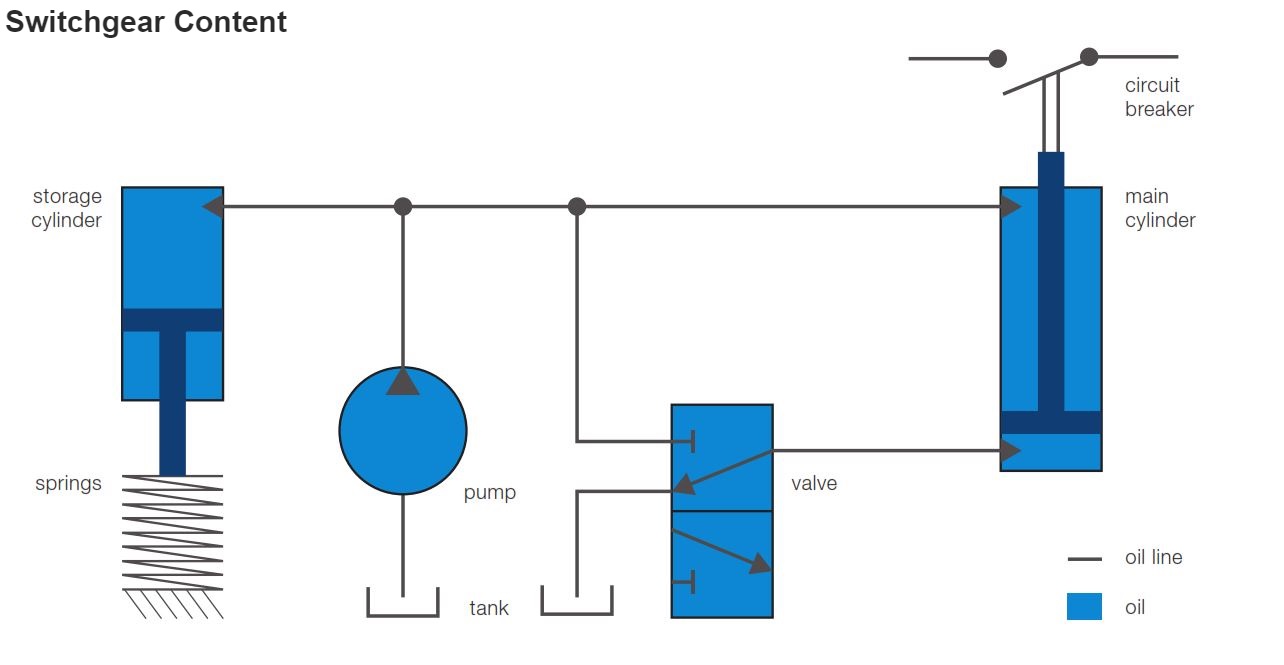
Photo from HMC-4 operating mechanism brochure copy right ABB High Voltage Products
The hydraulic pump moves oil from the low pressure oil reservoir (tank) to the energy storage side, builds up pressure and charges the spring assembly. When required this energy is released to operate the circuit-breaker. To achieve this, the hydraulic pressure is applied to the piston of the main cylinder by a valve. The piston is attached to the circuit breaker s interrupter.
The upper side of the piston is always connected to high pressure. A valve is used to connect the lower side of the piston either to high or low pressure. For a close-operation the difference of the piston’s pressurized areas is relevant.
For an open-operation the difference in the pressure on the piston’s areas is relevant. After switching, the hydraulic pressure holds the piston in its end position safely. Thus, no latch is required.
The energy of the movement is always provided by the spring assembly. It is partly discharged by any operation (O or C).This discharge is sensed by a spring travel switch, and the hydraulic pump is switched on.
The pump replenishes the high pressure oil volume and stops after recharging.
Source :HMC-4 operating mechanism brochure copy right ABB High Voltage Products




Dear
If the pressured oil is hlding the Cb in the closing position or it’s only for the closing action.
I mean that if the breaker is in the closing condition and the oil presuure go below the desired value, the brekaer closing status will be effected ?
Reagrds
Hello, in the old technology, the oil was the direct factor in closing or opening the breaker, and in the new operating mechanism, the oil pressure is supported by a spring.
Thanks